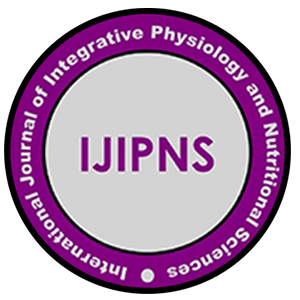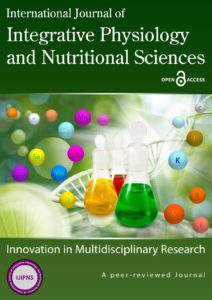Introduction
Mitochondria are double-membrane bound, spherical cellular organelles that act as a powerhouse of the cell. They contain their own genetic material (mtDNA) and synthesize protein subunits of enzymes needed for the oxidative phosphorylation system. The unique mitochondrial genome is 16,569 base pairs long and contains 37 genes that encode 13 proteins, 22tRNAs, and 2 rRNAS (Chial & Craig, 2008). However, recent discoveries have shown the presence of small RNAs derived from the mtDNA. In recent years, several small polypeptides synthesized from the short open reading frame (sORF) of the mtDNA have been identified. These small peptides are called mitochondrial-derived peptides (MDP) and modulate several biological and physiological functions. Some of the identified MDPs are humanin, MOTS-c (mitochondrial open reading frame of the 12S rRNA type-c), and small-humanin like peptides. The crucial role of MDPs has been well-documented in several crucial biological processes such as insulin resistance, aging, and inflammation (Ramanjaneya et al., 2019). In 2001, Nishimoto et al. discovered a 24 amino acid long peptide derived from the 16sRNA region of the mitochondrial DNA. The identified peptide, named Humanin (HN), displayed powerful neuroprotective behavior and prevented cellular insults related to Alzheimer’s disease (AD). Humanin was involved in a novel retrograde signaling pathway that transmits signals from mitochondria to the nucleus (Cobb et al., 2016). The present review is an attempt to understand the crucial role played by MDPs in various cellular and physiological processes and their implications in various diseases.
Classification and physiological roles of MDPs
Mitochondrial derived peptides have been classified into three categories.
- Humanin: Humanin is encoded by the small reading frame of 16S RNA of mtDNA and it is 21-24 amino acids long. It was the first MDP that was discovered. Humanin is highly conserved across species and shows variation in length depending on the location of synthesis. For example, the cytoplasmic humanin is 24-amino acid long while the mitochondrial humanin is 21-amino acid long. However, the biological functions of these varied length HN molecules remain the same. The presence of HN has been demonstrated in organs such as the kidneys, brain, vascular walls, and skeletal muscles. Humanin prevents the cells from oxidative damage and shows anti-inflammatory and anti-apoptotic properties (Yang et al., 2019). In a rat model of surgical menopause, the hippocampal expression of humanin decreased which led to less complex astrocytes. Interestingly, the ovarian hormones promoted the intracellular levels of humanin and also increased the humanin released by astrocytes. The study demonstrated that chronic ovariectomy can induce adverse morphological functions and compromised astroglial functions, a phenomenon commonly observed during the aging process. Moreover, the reduced release of humanin by the astrocytes has adverse consequences for synaptic functions and cognitive abilities post manopuase (Zarate et al., 2019). Recent observations have demonstrated that humanin plays a crucial role in increasing lifespan in animals. Experimental observations suggest that over- expression of humanin in C. elegans increased its lifespan. Similarly, humanin transgenic mice show protective effects against toxic insults. Furthermore, treating middle-aged mice using humanin analogue HNG significantly improved metabolic parameters and reduced the inflammatory status in the system. Naked mole-rat, a rat model that shows negligible senescence show remarkably stable levels of humanin. In humans, children of centenarians displayed significantly higher circulating levels of humanin than the control group. The levels of humanin decrease in disorders like Alzheimer’s disease. Taken together, a strong correlation between humanin and increased lifespan exists in both humans and animal models (Yen et al., 2020).

Figure 1: Physiological roles of humanin. Humanin improves insulin sensitivity, reduces inflammation and apoptosis, improves lifespan, and positively affects the cognitive abilities.
- MOTS-c: MOTS-c (mitochondrial open reading frame of the 12S rRNA type-c) is a 16 amino-acid long peptide synthesized from 12S rRNA gene. It improved energy metabolism by directly promoting the activity of AMPK protein kinase. MOTS-c has shown protective effects in various metabolic disorders and prevented diet-induced obesity, insulin resistance, and type 2 diabetes mellitus (Lee et al., 2015). It enhances glucose uptake, oxidizes free fatty acid but inhibits oxidative respiration. MOTS-c also possesses anti-inflammatory properties due to its inhibition of NF-κB pathway and protects endothelial dysfunction (Li et al., 2018). MOTS-c has demonstrated “exercise mimetic” properties in animal models of diet-induced obesity (DIO). MOTS-c injected mice displayed reduced activity of three crucial pathways- dicarboxylate metabolism, sphingolipid metabolism, and monoacylglycerol metabolism. Since the activity of these 3 pathways shows upregulation in DIO and T2DM models, MOTS-c injection may offer a promising strategy to reduce metabolic complications. MOTS-c also improved insulin sensitivity and reduced fat accumulation by promoting beta-oxidation of fats. Thus, MOTS-c holds promise against obesity and hepatic fat accumulation/fatty liver (Lee et al., 2015).
- SHLPs: Small humanin-like peptides (SHLPs) are small peptides encoded from the same mtDNA region as humanin. SHLPs regulate cell viability under in vitro conditions and SHLP2 & SHLP3 show protective effects similar to humanin. SHLPs prevent cellular apoptosis and protect the cell against cellular oxidative stress. Interestingly, SHLP2 and SHLP3 promoted the differentiation of pre-adipocyte. Studies in animal models have shown that intracerebral infusion of SHLP2 reduced the production of hepatic glucose while promoting glucose uptake. This suggests that SHLP2 acts as an insulin sensitizer both centrally and peripherally. Importantly, the SHLP2 levels showed age-related decline suggesting that mitochondria directly modulates the cellular and physiological processes associated with cell survival and cellular metabolism via MDPs (Cobb et al., 2016).

Figure 2: Physiological roles of MOTS-c and SHLPs.
Conclusion
Mitochondria areconsidered the most important cellular organelle due to its central role in energy generation and energy metabolism. Recently, several mitochondrial derived peptides have identified which plays a crucial role in several metabolic, cellular, and physiological processes. Humanin, MOTS-c, and SHLPs are some of the identified MDPs with diverse role in cell survival, glucose metabolism, insulin sensitivity, and inflammation. MDPs have shown promise as anti-obesity, anti-inflammatory, anti-apoptotic, and anti-aging peptides. However, the field of MDPs is still recent and further research in this direction may pave the way novel therapeutic molecules for the management of metabolic, neurological, and age-related disorders.


